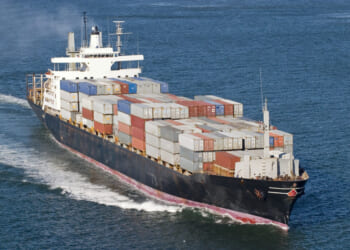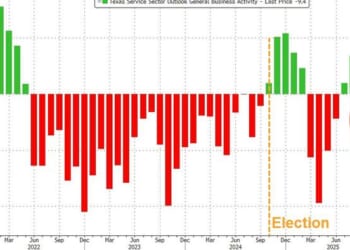The Cold War was a globe-spanning contest with American forces facing down Soviet aggression from Middle Eastern deserts to the Arctic’s glaciers. Yet, after the Soviet Union’s collapse, American strategic engagement in the polar regions deteriorated. For example, the U.S.-run McMurdo Station in Antarctica has historically relied on the 49-year-old Polar Star icebreaker, which recently had to undergo service-life extension.REF U.S. adversaries have since exploited this opportunity. China’s “near-Arctic power” claim rests on exploiting the Northern Sea RouteREF while Russia stands by to support its partner’s ambitions. At the same time, America’s icebreaker shortage precluded an effective Antarctic strategic response as China surged into the far South.REF
Reversing these trends demands U.S. presence, but for the U.S. to navigate the poles, much less secure American interests, a fleet of specialized ships designed to move and navigate in icy waters, known as icebreakers, is required. On November 13, 2024, the United States, Canada, and Finland established the Icebreaker Collaboration Effort (ICE) Pact focusing on information and technology exchanges, workforce development, cooperation with allies and partners, and future initiatives and research and development.REF To achieve these objectives, the American government should embrace the ICE Pact’s tools to resolve unacceptable U.S. icebreaker fleet size and obsolescence concerns. Pairing allied industrial expertise, infrastructure, and capital with American demand, capital, and scale through the ICE Pact will best address this critical vulnerability for American economic, scientific, and security interests.
State of Play in the Arctic
Leveraging the ICE Pact for strategic success will require understanding the major players’ current positions in the Arctic and Antarctic. The former is largely shaped by Canada, Denmark, Finland, Iceland, Norway, Russia, Sweden, and the U.S.—which comprise the Arctic Council, each holding Arctic territory. While the Arctic Council excludes security matters, the relationship between Russia and the remaining permanent members has spiraled in recent years as a result of the Ukraine war and the addition of Finland and Sweden to the North Atlantic Treaty Organization (NATO). Their NATO membership assures additional access in the Arctic and Baltic. It has also elevated concerns about Russian ambitions in the Arctic.
Russia has intentionally sought to counter NATO’s growing involvement in the Arctic. In late October, Norway’s Minister of Defense Tore Sandvik confirmed this, noting Oslo’s observations concerning Russian activity off the Kola Peninsula—including submarine, warship, and naval aircraft movement near Norway.REF Such activity is especially notable if Moscow intends to sever NATO Allies’ access to the surrounding seas and trade routes. Even worse, over the past two decades, Russia’s Arctic investment has far outpaced NATO’s, with Russia expanding its Arctic military bases to outnumber NATO’s by more than 30 percent.REF
Similarly, Chinese activity is increasingly shaping the Arctic security landscape. Though China is not an Arctic nation, it justifies its presence through the self-appointed title of a “near-Arctic power” despite the highest Chinese latitude being no more northerly than Hamburg or Rotterdam. This pride has driven Beijing to pursue the first fully modern shipping route from China to Europe via the Northern Sea Route (NSR). In late September, a container ship departed from China’s Ningbo-Zhoushan port bound for Felixstowe in southeast England. The use of the NSR by adversarial states like China and Russia raises serious concerns about undermining Western and NATO access and influence in the region. It also opens the door to resource exploitation and expanded military projection in the Arctic.
Risks posed by Russian and Chinese designs in the Arctic and Antarctic can be mitigated to some degree simply by additional presence. While limited in their combat utility, icebreakers are essential to this mission. However, the U.S. lacks sufficient capability, with only a handful of operational icebreakers, including the two currently in the Arctic.REF Overall, U.S. and NATO icebreakers and ice-capable patrol ships amount to 47 vessels, against Russia’s fleet of 57 vesselsREF—eight of which are nuclear-powered for enhanced endurance.REF Meanwhile, China currently operates five icebreakers in the Arctic.REF
Economic Interests in the Arctic
The Arctic’s vast economic potential is a driving factor behind icebreaker build-ups likely to underpin national fleets for decades. (See the oldest operating icebreakers in the ICE Pact nation’s fleets: USCG Polar Star commissioned in 1976,REF CCGS Louis S. St-Laurent launched in 1968,REF and the Voima rebuilt from 1978 to 1979.REF) Alaska is home to America’s primary Arctic economic potential with plentiful fuel and mineral resources. Alaska is already a large energy producer with average oil production of 421,000 barrels a day in 2024,REF but the 2008 Circum-Arctic Resource Appraisal estimated “approximately 90 billion barrels of oil, 1,669 trillion cubic feet of natural gas, and 44 billion barrels of natural gas liquids”REF undiscovered in the Arctic. Arctic Alaska is a key production region as “approximately 84 percent of the undiscovered oil and gas occurs offshore.”REF These resources’ relevance is enhanced by U.S. Bureau of Ocean Energy Management (BOEM) efforts to develop the 11th National Outer Continental Shelf Oil and Gas Leasing Program with a High Arctic planning area.REF Rare earth minerals also appear in Alaska’s Arctic territory which contains cobalt-rich ferromanganese crusts with “potentially large deposits of cobalt, nickel and rare-earth elements.”REF
Long choked by multiyear ice sheets, the Northwest Passage has seen commercial traffic well above the historical norm since 2022.REF Increasing amounts of the Northwest Passage have been ice free, but significant ice continues to limit passage through chokepoints near Victoria Island.REF Given that “[a] thawed passage is not necessarily an iceless passage”REF researchers surmised that the Northwest Passage could become more efficient than the Suez Canal in the medium term for Asia-to-Europe transits within the context of “cleaned channels by coastal countries’ icebreakers at no-cost.”REF Unexpected disruptionsREF and turbulent geopoliticsREF have also underlined the value that alternative routes can provide.REF Meanwhile, Canada’s Arctic base expansion may increase national security access and create supporting infrastructure for the Passage.REF
Changing Ambitions in the Antarctic
The present consensus in Antarctica, by contrast, emphasizes peaceful science to prevent sovereignty disputes. In December 1959, the United States brought 12 countries together to sign the Antarctic Treaty agreeing to the overriding principle enshrined in Article 1: “Antarctica shall be used for peaceful purposes only.”REF Article 4 of the Antarctic Treaty confirmed: “No acts or activities taking place while the present Treaty is in force shall constitute a basis for asserting, supporting or denying a claim to territorial sovereignty in Antarctica or create any rights of sovereignty in Antarctica.”REF The Protocol on Environmental Protection to the Antarctic Treaty, the Convention for the Conservation of Antarctic Seals, and the Convention on the Conservation of Antarctic Marine Living Resources, all ratified by the United States, together form the Antarctic Treaty System.
Still, significant economic interests are embedded within this system. Scientists estimate that fisheries controls in Antarctic waters return annual worldwide economic benefits of $180 billion a year.REF Beyond Antarctic tourism, these benefits are largely due to the Antarctic Circumpolar Current distributing krill, a foundational piece of ocean food chains, around the globe.REF
American policy since the first Reagan Administration has been to maintain Antarctic presence to accomplish U.S. scientific exploration and resource-management strategic objectives while freezing Antarctic territorial claims.REF To this day, authorization for the U.S. Antarctic Program traces back to President Ronald Reagan’s Presidential Memorandum 6646 directing an American presence in Antarctica, under the National Science Foundation, at the South Pole and two coastal locations. This presence remains in place today at Amundsen-Scott South Pole Station, McMurdo Station, and Palmer Station.REF
President Bill Clinton reaffirmed these strategic objectives in his Presidential Decision Directive (PDD) 26, which noted goals including preservation of the Antarctic environment, pursuing scientific research, maintaining Antarctica’s peaceful status, and assuring conservation in the Antarctic oceans.REF President Donald Trump maintained this approach in his “Memorandum on Safeguarding U.S. National Interests in the Arctic and Antarctic Regions,” which referenced “the ability to provide a persistent United States presence in the Antarctic region, as appropriate, in accordance with the Antarctic Treaty System.”REF Bipartisan unity prevailed when President Joe Biden’s National Security Memorandum 23 replaced President Clinton’s PDD 26 but maintained its strategic objectives and situated American strategy within the Antarctic Treaty System as President Trump had done.REF
The extensive historical foundations of American presence display the reasons why icebreakers are an essential capability. Antarctica’s climate is the harshest on Earth, and year-round stations require external resupply. McMurdo Research Station is the hub for American presence due to its position on the Antarctic coast and its size. The primary resupply of McMurdo is the USCG Polar Star’s annual transit which breaks a channel for a cargo ship and (every other year) a tanker. These transits deliver 10 million to 12 million pounds of cargo annually, with 8 million gallons of fuel offloaded every other year. These resources are then distributed across Antarctica. Without an icebreaker, resupply is impossible.REF
Finally, icebreakers underpin America’s ability to conduct unannounced inspections of Antarctic research stations to ensure that no militarization is occurring. Chinese and Russian ambitions extend to the South Pole where they maintain, respectively, three and five permanent research bases, three and five seasonal bases,REF and likely operate several icebreakers.REF Persistent suspicions among U.S. allies about the intent of Russian and Chinese “research” missions signal potential challenges to the Antarctic Treaty and heighten concerns over adversarial ambitions for resource exploitation and military projection in the South Pole—particularly with the increased use of dual-use technologies.REF Yet, with decreased capacity, the last inspections into militarization were those conducted in February 2020, once again demonstrating both the utility of and need for icebreakers.REF
The ICE Pact’s Offer and Opportunity
Over its first year, the ICE Pact has facilitated industrial expansion and icebreaker orders. Among other steps, major icebreaker shipbuilder Davie Shipyards announced its intention to acquire facilities in Galveston and Port Arthur, Texas, from Gulf Copper & Manufacturing Corporation.REF Lately, Davie announced the manufacturing facility it plans to build once icebreaker contracts are signed.REF Icebreaker shipyard interest has emerged not just on the back of the ICE Pact memorandum, but on specific steps like the purchase of the AiviqREF and the One Big Beautiful Bill’s (OBBB’s) multibillion dollar investments in icebreakers including Polar Security Cutters, Arctic Security Cutters (ASCs), and other light and medium icebreakers.REF
However, the industrial output differential between U.S. and foreign shipyards makes evident the need to derive and apply key production and workforce lessons. Shipbuilders in Finland and Canada, for example, operate on much faster timetables, supported by concentrated supply chains and highly specialized labor forces. Finland’s Helsinki Shipyard—responsible for more than 50 percent of the global icebreaker fleet over the past quarter-centuryREF—can deliver a new vessel within just 24 months of contracting, roughly five times faster than U.S. shipyards.REF Much of this success is attributed to a concentration of maritime companies in southern Finland that design and supply propulsion, engines, and specialized systems to nearby yards.REF For instance, Rauma Marine Constructions—one of Finnish shipbuilding’s significant players—states that the majority of their supply chain is located within 150 kilometers, a lesson the U.S. should examine.REF
President Trump has focused on the ICE Pact to restore America’s icebreaking fleet in his second term, with implementation underway. In March 2025, the three countries’ National Coordinators met in Helsinki to advance the ICE Pact work plan, focusing on the four pillars.REF But until domestic capacity matures, the U.S. must depend on Finland and Canada—while urgently adopting their efficiency and specialization lessons at home. Finland is central to this, as reflected in President Trump’s initial post-reelection conversation with Finnish President Alexander Stubb when ICE Pact was discussed.REF These positive interactions created momentum for the early October 2025 memorandum signed between the United States and Finland to purchase ASCs from Finnish shipyardsREF courtesy of a national security waiver from President Trump.REF Consistent with the Trump Administration’s push to restore America’s maritime dominance,REF the effort will begin with partner shipyards in Finland before the construction of seven ASCs in American shipyards in Texas and Louisiana.REF With executive branch approvals in order, it now falls to Congress to ensure that funds are authorized and appropriated so that icebreakers are constructed.
Recommendations for the Coast Guard, Congress, and the Department of Commerce
In order to realize the promise of the ICE Pact, the U.S. Coast Guard should:
- Obligate the icebreaker funds made available in the OBBB. Using OBBB icebreaker funds,REF the Coast Guard should contract for the purchase of the first four Arctic Security Cutters with firm design commitments no later than June 2026. In parallel, the Coast Guard should sign a contract with American shipyards for additional icebreaker construction.
- Explore, through the Department of Homeland Security, a joint project with the Canadian Coast Guard to comprehensively map the Northwest Passage. Though there are conflicting legal understandings of sovereignty in parts of the Arctic between the United States and Canada, that has not stopped cooperation. As the Northwest Passage is freeing up from ice, a joint comprehensive mapping of Northwest Passage waterways would reduce maritime industry navigability concerns, especially as Russia and China use the NSR.
Congress should:
- Hold hearings to review Arctic and Antarctic naval and Coast Guard operations. To avoid a hollow capability problem, Congress should hold hearings to determine basing, repair, and sustainment requirements for an expanded icebreaker fleet and clarify their operational priorities in support of broader U.S. maritime objectives (military, economic, and scientific) in the poles.
The Department of Commerce should:
- Facilitate a private transatlantic business forum by June 2026 in connection with the Maritime Action Plan. This forum should aim to gather relevant industrial partners from the ICE Pact nations with government officials to clarify next steps on shared goals: implementing modern production techniques across allied shipyards, structuring the Workforce Exchange Program with the U.S., framing a Trusted Suppliers List for subcontractors and components, and resolving lingering defense export controls concerns.
Jordan Embree is Research Associate in the Margaret Thatcher Center for Freedom at The Heritage Foundation. Anna Gustafson is Research Assistant in the Douglas and Sarah the Allison Center for National Security at The Heritage Foundation.
















